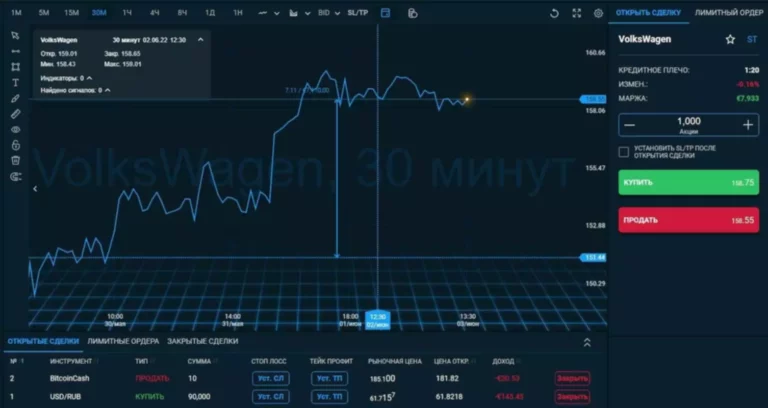This advised enchancment stems from the idea that a standalone AMM model might not suffice to address all challenges. Hybrid fashions can incorporate working components of various AMM models to attain particular outcomes. The way ahead for Automated Market Makers appears promising, with several emerging tendencies and innovations set to form their evolution.
Second huge drawback with CPMM swimming pools is the potential for impermanent loss or achieve (but in apply loss has the highest probability). Such happens because of both, excessive volatility and non-adjustable constant value. Impermanent loss happens in case the worth in AMM models differs in any direction within a certain pool.

They are primarily used in spinoff platforms to allow trading with out the necessity for traditional counterparts. It permits for swimming pools with greater than two types of property and uses a weighted geometric imply to maintain stability. This mannequin can offer more flexibility and higher capital efficiency for multi-asset swimming pools. In change, LPs obtain LP tokens, which may fluctuate in value based on the trading exercise and the general efficiency of the liquidity pool. These swimming pools facilitate trading by mechanically executing trades based on preset algorithms, embodying what does AMM stand for. This innovation has significantly broadened the scope of DeFi (Decentralized Finance), permitting for more accessible, efficient, and safe trading within the crypto ecosystem.
What Are Automated Market Makers (amms)?
Users trade towards the sensible contract (pooled assets) versus immediately with a counterparty as in order guide exchanges. Automated market makers (AMMs) are part of the decentralized finance (DeFi) ecosystem. They permit digital assets to be traded in a permissionless and automated way through the use of liquidity swimming pools somewhat than a standard market of consumers and sellers. AMM customers supply liquidity swimming pools with crypto tokens, whose costs are decided by a continuing mathematical method. Liquidity pools can be optimized for various functions, and are proving to be an important instrument within the DeFi ecosystem.

As such, the centralized exchange is sort of the intermediary between Trader A and Trader B. Its job is to make the method as seamless as potential and match users’ purchase and sell orders in document time. AMM fashions are used as a worth establisher and cash is secured into the smart contract, the curve can’t really influence the collateralized property. Therefore, Perpetual Protocol eliminates impermanent loss risk for its users. Another benefit of the mannequin is that there is not a actual want in liquidity providers. Unlike conventional CPMM where pool’s liquidity come from LP, in vAMM merchants present money to the vault and thereby fill the pool by themselves.
What Are Automated Market Makers (amms)? Abstract
As we discussed in the last blog, Impermanent Losses or IL is the difference in worth between providing liquidity in AMMs relative to just holding those belongings in your wallet over time. It occurs as a outcome of prices diverging in any direction from the prices the place you offered the liquidity. If you see beneath, for the ETH-DAI pair on Uniswap, the AMM curve is «Concave,» implying that liquidity suppliers or LPs generate income only in a brief vary or portion of value movement. Liquidity pools are at the coronary heart of AMM platforms like WhiteSwap, functioning because the core mechanism that permits these automated money makers to facilitate buying and selling by offering liquidity.

In the crypto area, the largest market makers are traditional exchanges (CEXs). Recently, a new class of DeFi projects has even started designing paradigms that goal to generalize to any curve. Primitive Finance makes use of a Replicating Market Maker (RMM), which is prepared to construct an AMM curve from any of a giant range of attainable liquidity provider payoffs [18]. Shell protocol just lately launched a new AMM referred to as Proteus — it is constructed from conic sections and contains 6 parameters, giving it the power to be fit to a very wide selection of desired curves [19].
Benefits Of Amms
Curve, the originator of StableSwap, has additionally launched a brand new AMM for unstable belongings known as CryptoSwap [11]. CryptoSwap expands on the StableSwap algorithm by adding another parameter enabling faster switching into worth discovery mode (constant product) as the value moves away from the peg. This makes the algorithm better at dealing with a dynamic peg, allowing it to be used for more volatile belongings. Curve’s CryptoSwap implementations additionally embrace a dynamic charge and an internal oracle system, making it unique in that respect since most different solutions use fixed charges or Chainlink oracles [12]. Implementing this AMM requires fixing cubic, sextic, and higher-degree equations, which is usually carried out in apply utilizing Newton’s Method [13].
While out of the scope of this text, there’s also an ever-growing choice of protocols that supply financial derivatives, similar to choices and perpetuals. Secondly, Shared Pools permit anyone to supply liquidity and use the Balancer Pool Token (BPT) to track the possession of the pool. Smart Pools also use the BPT token and might settle https://www.xcritical.com/ for liquidity from any LP. However, Smart Pools can readjust the weighting and balances of belongings, as properly as trading fees. Early AMM fashions usually face challenges in efficiently using the capital in liquidity swimming pools. VAMMs do not maintain actual belongings however use mathematical formulas to simulate trading and liquidity provision.
Dynamic Automated Market Maker (damm)
The trajectory of AMMs factors towards an innovative monetary future the place trading is more inclusive, decentralized, and driven by superior technologies. Order guide techniques and Automated Market Makers (AMMs) are two distinct mechanisms for facilitating trades within the crypto markets. The spread variable was added in order to compensate for potential loss from AMM and make the market independant from other changes.

This system ensures that the pricing is reflective of present market situations, pushed by provide and demand within the pool. Instead of counting on the normal buyers and sellers in a financial market, AMMs keep the DeFi ecosystem liquid 24/7 by way of liquidity swimming pools. The chance of offering three and extra property to the pool creates a extra steady and nice setting for traders. Hence, the issue with impermanent loss is less potential in case of three or extra tokens placement. More then two variables in the equation ensure higher stability and make lower affect on the curve.
First, it’s decentralized, meaning it doesn’t rely on particular entities to offer liquidity. Instead, anybody can become a liquidity supplier by depositing tokens into the pool. This democratizes the market-making process and opens up opportunities for a wider range of participants. Each liquidity pool is a definite market for a specific token pairing.
This underscores the significance of solely utilizing reputable platforms which have undergone thorough safety checks. Furthermore, anybody can become a liquidity provider on an AMM platform, regardless of the measurement of their capital. This democratizes the buying and selling course of and opens up opportunities for a wider range of participants. Balancer takes the AMM model a step additional by permitting multiple tokens in a pool with totally different weights. This means you presumably can create a liquidity pool with greater than two tokens, and every can constitute a special percentage of the pool’s total value. Sushiswap started as a fork of Uniswap but shortly differentiated itself with additional options.
Balancer made CMMM popular by pooling its liquidity into one CMMM pool rather than a quantity of unrelated liquidity swimming pools. CMMMs stand out with some attention-grabbing use instances similar to one-tap portfolio services and index investing. Constant sum market makers (CSMMs) are an AMM variant that use the sum of two tokens as the idea, in distinction to CPMM which makes use of the product. Conversely, centralized exchanges (CEXs) use an order e-book to match a purchaser with a seller to execute a cryptocurrency trade at a mutually agreed change price.
Some decentralized exchanges (DEXs) facilitate trades instantly between customers and wallets. You can think of these sorts of trades as peer-to-peer (P2P) transactions between patrons and sellers. However, DEXs that execute transactions using AMMs are effectively peer-to-contract (P2C) transactions.
Also aiming to extend liquidity on its protocol, DODO is utilizing a model known as a proactive market maker (PMM) that mimics the human market-making behaviors of a standard central restrict order book. Ultimately, this facilitates extra efficient buying and automated market makers crypto selling and reduces the impairment loss for liquidity suppliers. Automated market makers (AMMs) are decentralized exchanges that use algorithmic “money robots” to supply liquidity for traders shopping for and selling crypto property. However, decentralized exchanges (DEXs) and automated market makers (AMMs) are non-custodial.
The design of this process includes many tradeoffs that finally affect the utility of the platform to each liquidity suppliers and merchants. If an AMM doesn’t have a enough liquidity pool, it could create a large price impact when traders buy and promote belongings on the DeFi AMM, resulting in capital inefficiency and impermanent loss. To incentivize liquidity providers to deposit their crypto property to the protocol, AMMs reward them with a fraction of the charges generated on the AMM, usually distributed as LP tokens. The follow of depositing assets to earn rewards is named yield farming.
